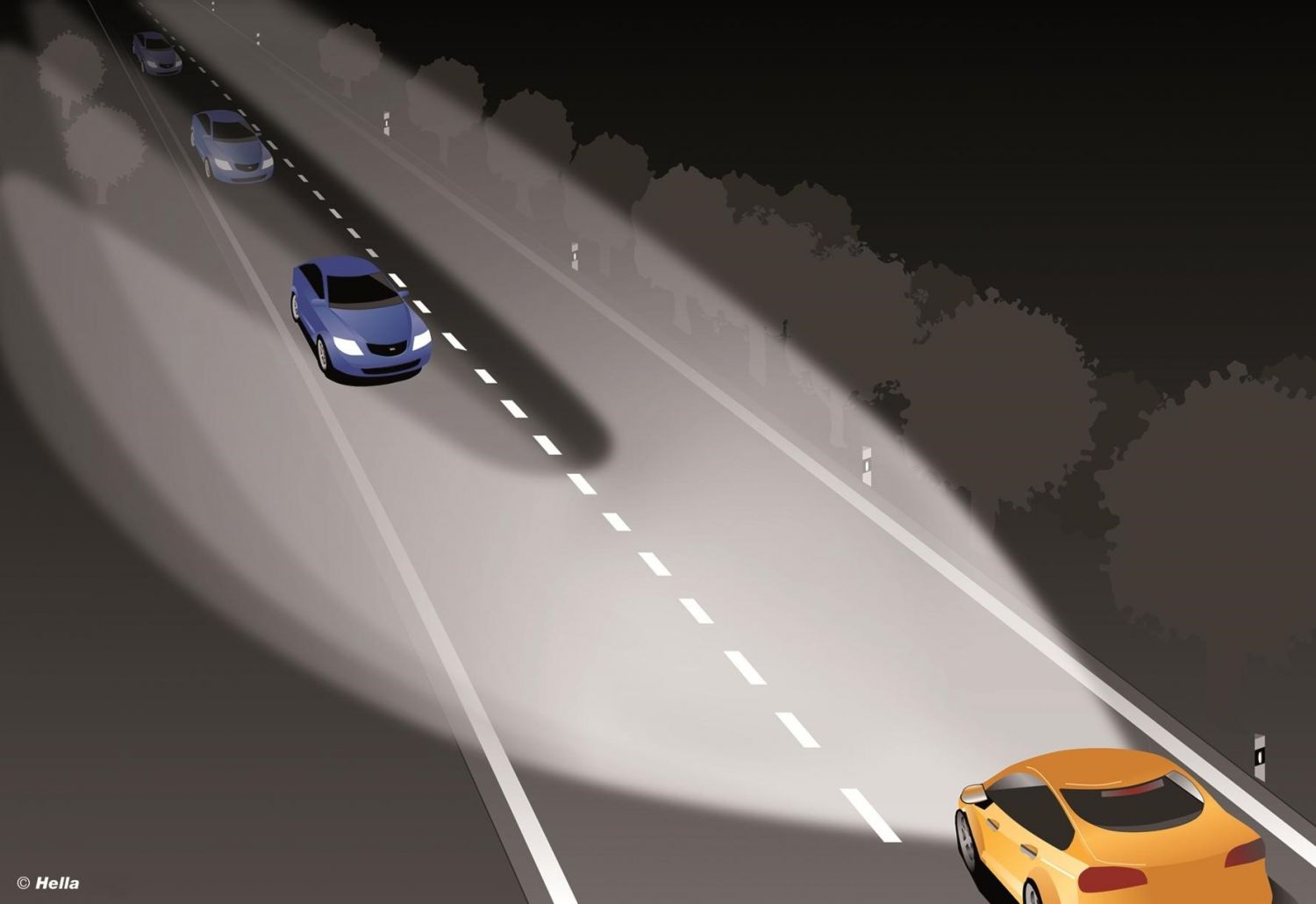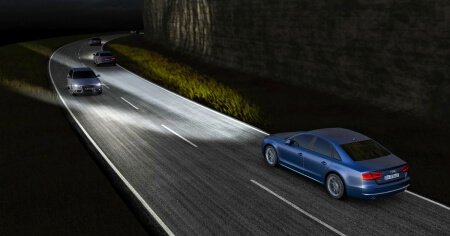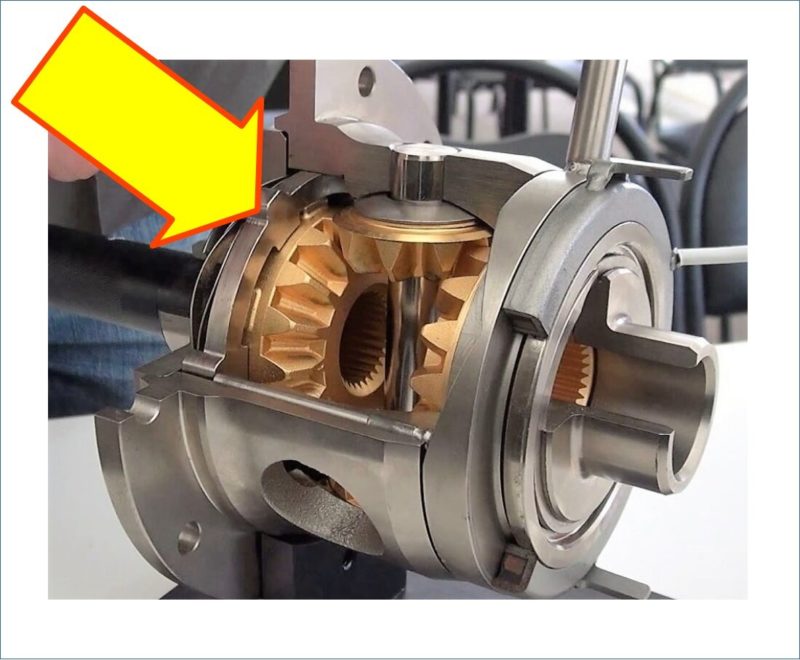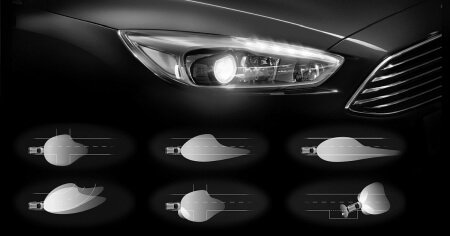
adaptive car light
Content
 Until recently, drivers had only two lighting modes in their arsenal: low beam and high beam. But due to the fact that the headlights are strictly fixed in one position, they cannot guarantee illumination of the entire road space. Typically, headlights illuminate the canvas in front of the car and to some extent - on the sides of traffic.
Until recently, drivers had only two lighting modes in their arsenal: low beam and high beam. But due to the fact that the headlights are strictly fixed in one position, they cannot guarantee illumination of the entire road space. Typically, headlights illuminate the canvas in front of the car and to some extent - on the sides of traffic.
For the first time, VolkswagenAG engineers have developed and used a new car lighting system, called adaptive light, to equip cars. The essence of the functioning of this system is that the direction of the headlights dynamically changes according to the direction of movement of the vehicle itself. According to the specialists of FAVORITMOTORS Group, this development is highly valued among car owners. Today, cars from Mercedes, BMW, Opel, Volkswagen, Citroen, Skoda and many others are equipped with adaptive lighting.
Why does a modern car need AFS?
 When driving in conditions of poor visibility (at night, in rain, snow or fog), the driver cannot get full visibility of the road area using traditional dipped and high beam headlights. Often unexpected obstacles in the form of a large pit or a fallen tree can lead to an accident, because they are not visible to the driver in advance.
When driving in conditions of poor visibility (at night, in rain, snow or fog), the driver cannot get full visibility of the road area using traditional dipped and high beam headlights. Often unexpected obstacles in the form of a large pit or a fallen tree can lead to an accident, because they are not visible to the driver in advance.
The AFS system has become a kind of analogue of a conventional flashlight, which is held in the hands of a pedestrian who sets off on a journey at night. A person has the ability to control a beam of light and can see the road, foreseeing ways to bypass emerging obstacles. The same principle is put into the functionality of the adaptive light system: the slightest change in the turn of the steering wheel of the car changes the direction of the headlights. Accordingly, the driver, even in the zone of poor visibility, will clearly see all the nuances of the road surface. And this increases the level of safety several times compared to cars that are not equipped with adaptive light.
The structure and principle of operation of AFS
The on-board computer takes over the control of the adaptive light. Its functions are to receive a variety of indicators:
- from the steering rack turn sensors (as soon as the driver touched the steering wheel);
- from speed sensors;
- from vehicle position sensors in space;
- signals from ESP (auto stability system at the selected course);
- signals from the windscreen wipers (to take into account the presence of bad weather conditions).
 After analyzing all the received data, the on-board computer sends a command to turn the headlights to the required angle. Modern AFS use exclusively bi-xenon light sources, while their movement is limited to a maximum angle of up to 15 degrees. However, each headlight, depending on the commands of the computerized system, can turn along its own trajectory. The work of adaptive light also takes into account the safety of drivers traveling towards them: the headlights turn in such a way as not to blind them.
After analyzing all the received data, the on-board computer sends a command to turn the headlights to the required angle. Modern AFS use exclusively bi-xenon light sources, while their movement is limited to a maximum angle of up to 15 degrees. However, each headlight, depending on the commands of the computerized system, can turn along its own trajectory. The work of adaptive light also takes into account the safety of drivers traveling towards them: the headlights turn in such a way as not to blind them.
If the driver frequently changes the position of the steering wheel, then adaptive light sensors inform the computer that there is no drastic change in direction. Therefore, the headlights will only shine directly. If the driver turns the steering wheel sharply, then AFS will immediately be reactivated. For the convenience of driving, adaptive light can be directed not only horizontally, but also vertically. For example, when driving on a long uphill or downhill.
Operating modes of adaptive light
Today, vehicles are equipped with innovative multi-mode adaptive light. That is, depending on the situation, the headlights will be able to work in a more comfortable mode for the driver:
 Trunk - when driving on unlit roads and highways at night, the headlights will shine as brightly as possible to ensure good visibility. However, when an oncoming vehicle approaches, their brightness will decrease, and the headlights themselves will lower so as not to dazzle.
Trunk - when driving on unlit roads and highways at night, the headlights will shine as brightly as possible to ensure good visibility. However, when an oncoming vehicle approaches, their brightness will decrease, and the headlights themselves will lower so as not to dazzle.- Country - used for driving on rough roads and performs the functions of a conventional dipped beam.
- Urban - relevant in large settlements, when street lighting cannot provide a complete visual picture of the movement; headlights guarantee the spread of a large light spot throughout the entire path of movement.
To date, accident statistics speak for themselves: cars equipped with AFS are 40% less likely to be involved in accidents than cars with conventional headlights.
Application of AFS
Adaptive light is considered a fairly new development in the active safety system of cars. However, some automakers appreciated its use and began to equip all manufactured models with AFS.
For example, passenger cars of Volkswagen, Volvo and Skoda brands presented at the FAVORITMOTORS Group showroom are equipped with adaptive lighting of the latest generation. This allows the driver to feel comfortable when driving on any road and in any weather.

 Trunk - when driving on unlit roads and highways at night, the headlights will shine as brightly as possible to ensure good visibility. However, when an oncoming vehicle approaches, their brightness will decrease, and the headlights themselves will lower so as not to dazzle.
Trunk - when driving on unlit roads and highways at night, the headlights will shine as brightly as possible to ensure good visibility. However, when an oncoming vehicle approaches, their brightness will decrease, and the headlights themselves will lower so as not to dazzle.